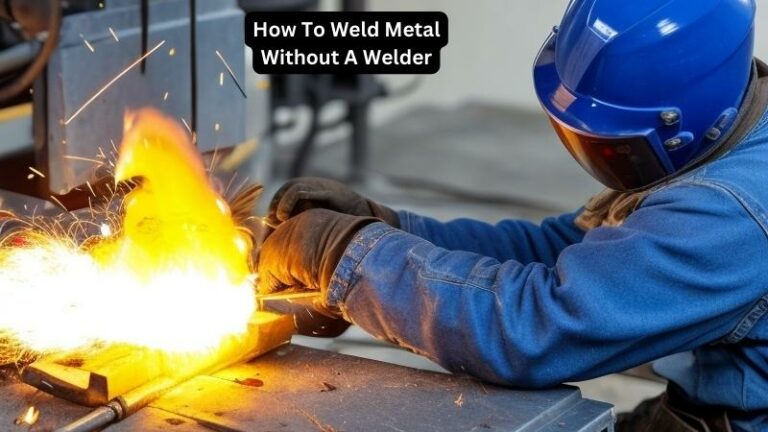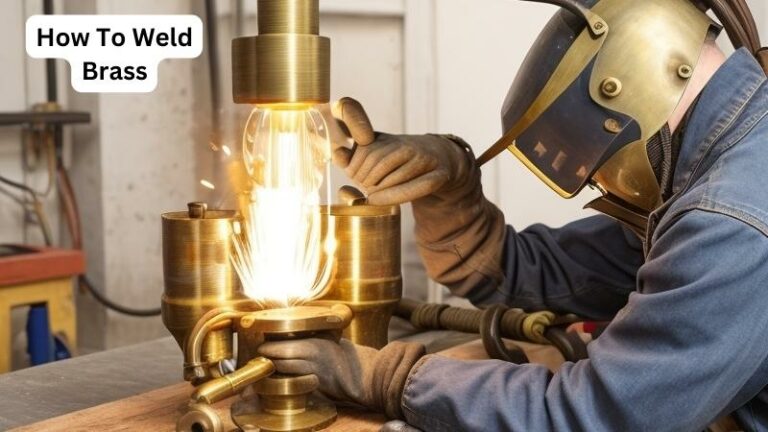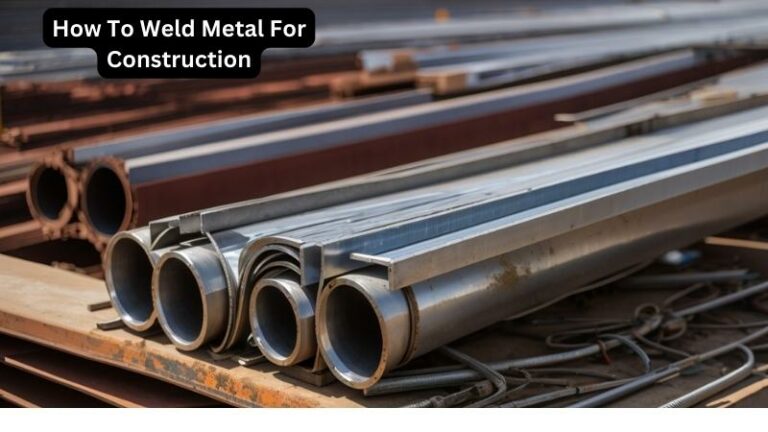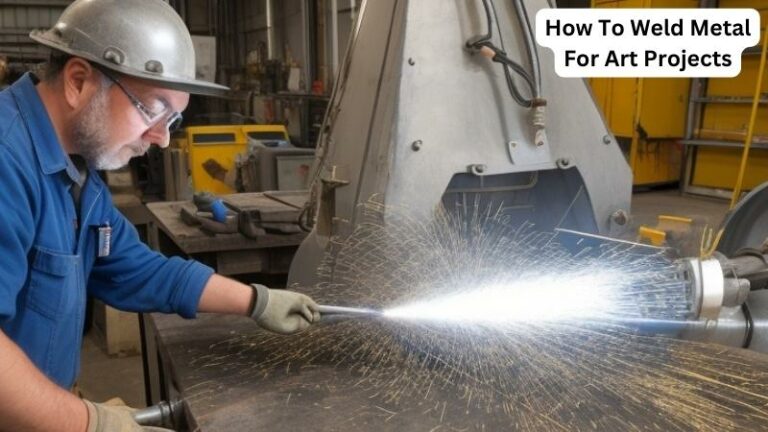How To Weld Stainless Steel
Today we discuss How To Weld Stainless Steel. Welding stainless steel requires a different approach compared to other metals due to its unique properties. But don’t worry, we’ve got you covered! Whether you’re a beginner or an experienced welder looking to expand your skills, this guide will walk you through everything you need to know about welding stainless steel.
So, if you’re ready to dive into the world of stainless steel welding, let’s get started! By the end of this guide, you’ll have the knowledge and confidence to tackle your own stainless steel welding projects and create professional-grade welds that will stand the test of time. Let’s jump right in and discover the art of welding stainless steel!
How to Weld Stainless Steel: A Comprehensive Guide
Welcome to our comprehensive guide on how to weld stainless steel. Whether you’re a beginner or an experienced welder, this article will provide you with the in-depth information you need to successfully weld stainless steel.
From understanding the unique properties of stainless steel to choosing the right equipment and techniques, we’ve got you covered. So let’s dive in and learn how to create strong and durable welds on stainless steel!
The Unique Properties of Stainless Steel:
Before we dive into the welding process, it’s important to understand the unique properties of stainless steel. Unlike regular carbon steel, stainless steel is an alloy that contains a minimum of 10.5% chromium. This high chromium content gives stainless steel its exceptional corrosion resistance and makes it ideal for a wide range of applications, from kitchen utensils to industrial tanks.
Another important property of stainless steel is its low thermal conductivity. This means that stainless steel can quickly develop a heat-affected zone (HAZ) during the welding process, which can lead to distortion or even cracking if not properly managed. Therefore, it’s crucial to use the correct welding techniques and equipment when working with stainless steel.
Furthermore, stainless steel comes in various grades, each with its own unique composition and properties. The most common grades used for welding are austenitic stainless steels (such as 304 and 316) and ferritic stainless steels (such as 430). Understanding the specific properties and limitations of the grade you’re working with is essential for achieving high-quality welds.
Choosing the Right Welding Method:
When it comes to welding stainless steel, there are several methods to choose from. The most commonly used methods for stainless steel welding are TIG (Tungsten Inert Gas) welding and MIG (Metal Inert Gas) welding.
TIG welding is known for its precision and versatility. It uses a non-consumable tungsten electrode to create the arc, while a separate filler metal is added manually. TIG welding is ideal for thin stainless steel sheets or complex joints, as it allows for precise control of the heat input.
MIG welding, on the other hand, is a faster and more cost-effective method. It uses a consumable wire electrode that is continuously fed through the welding torch, along with a shielding gas to protect the weld pool. MIG welding is particularly suitable for thicker stainless steel sections or large-scale projects.
Preparing the Stainless Steel Surface:
Before you start welding, it’s crucial to properly prepare the surface of the stainless steel. This involves removing any contamination, such as dirt, oil, or rust, that could affect the quality of the weld. Here’s a step-by-step guide to preparing the surface:
- Clean the surface using a stainless steel brush or grinder to remove any dirt or debris.
- Use a solvent or degreaser to remove any oil or grease from the surface. Make sure to thoroughly clean and dry the area.
- If there is any rust present, use a wire brush or abrasive pad to remove it. Alternatively, you can use a chemical rust remover.
- After removing the rust, clean the surface again to remove any residue left by the rust remover.
- Finally, inspect the surface to ensure it is clean and ready for welding. If necessary, repeat the cleaning process.
Setting Up Your Welding Equipment:
Once the surface is prepared, it’s time to set up your welding equipment. Here are some important steps to follow:
- Choose the appropriate welding machine for the job, considering factors such as the thickness of the stainless steel and the welding method you’ll be using.
- Select the correct type and size of electrode or wire for stainless steel. Consult the manufacturer’s recommendations or seek guidance from a welding supply store.
- Set the shielding gas flow rate according to the welding machine’s specifications and the type of gas you’re using.
- Adjust the welding parameters, such as amperage and voltage, based on the stainless steel grade and thickness. Refer to welding charts or consult a welding professional if you’re unsure.
- Ensure that your welding machine’s grounding is properly connected to the stainless steel workpiece. This is crucial for the electrical circuit to function correctly.
Executing the Weld:
Now that everything is set up, it’s time to execute the weld. Here’s a step-by-step guide:
- Position the stainless steel pieces to be welded, ensuring proper fit-up and alignment.
- Hold the welding torch at the correct angle and distance from the workpiece.
- Strike the arc, keeping a steady and smooth movement. Control the heat input and the size of the weld pool.
- Add filler metal if necessary, ensuring proper fusion between the base metal and the filler metal.
- Continue welding along the joint, maintaining a consistent speed and technique.
- Once the weld is completed, allow it to cool gradually to prevent cracking or distortion.
Common Challenges and Troubleshooting:
While welding stainless steel can produce excellent results, it can also present some challenges. Here are some common issues you may encounter and how to troubleshoot them:
Cracking
One of the most common issues with stainless steel welding is the occurrence of cracking. This can happen due to several factors, such as high thermal stresses, improper filler metal selection, or inadequate preheating. To prevent cracking, consider the following:
- Preheat the stainless steel to reduce thermal stresses.
- Use low-hydrogen filler metals to minimize the risk of cracking.
- Control the heat input and avoid excessive heating and cooling rates.
- Consider using techniques such as buttering or back purging to improve the weld’s quality and reduce the risk of cracking.
Distortion
Due to the low thermal conductivity of stainless steel, distortion can easily occur during welding. To minimize distortion, follow these tips:
- Secure the workpiece with clamps or fixtures to prevent movement during welding.
- Use tack welds to hold the pieces together before making the final welds.
- Weld in small sections and alternate between sides to balance the heat input.
- Consider using preheat and post-weld heat treatment techniques to reduce residual stresses and distortion.
Poor Weld Quality
If you’re experiencing poor weld quality, such as lack of fusion or porosity, consider the following solutions:
- Ensure that the workpiece and the filler metal are clean and free from contaminants.
- Check the shielding gas flow rate and gas composition to provide adequate protection to the weld pool.
- Adjust the welding parameters, such as amperage and travel speed, to achieve proper fusion and penetration.
- Inspect your welding machine and ensure that it is functioning correctly.
- If needed, seek assistance from a welding professional to troubleshoot the issue.
Conclusion
Welding stainless steel requires a good understanding of its unique properties and the right techniques. By selecting the appropriate welding method, preparing the surface properly, setting up your equipment correctly, and executing the weld with care, you can achieve high-quality and durable welds on stainless steel. Remember to troubleshoot common challenges and follow good welding practices to ensure successful results. Happy welding!
Key Takeaways: How To Weld Stainless Steel
- Welding stainless steel requires specialized equipment and techniques.
- Clean the stainless steel surface thoroughly before welding to ensure a strong bond.
- Choose the appropriate welding method, such as TIG or MIG, for the specific stainless steel grade.
- Use the proper welding filler material compatible with the stainless steel being welded.
- Control the heat input and welding speed to prevent distortion and maintain the integrity of the weld.
faqs for How To Weld Stainless Steel:
Before you start welding stainless steel, there are a few factors to keep in mind.
First, make sure you have the right type of stainless steel for the job. Different grades have different welding characteristics.
Next, clean the surfaces thoroughly to remove any contaminants that could affect the quality of the weld.
Additionally, choose the appropriate welding method, whether it’s TIG, MIG, or stick welding, based on the thickness and application of the stainless steel.
Finally, ensure you have the correct filler material compatible with the stainless steel grade.
When it comes to welding stainless steel, TIG (Tungsten Inert Gas) welding is often considered the best method. TIG welding provides precise control over the heat input with the use of a non-consumable tungsten electrode, allowing for clean and high-quality welds. It’s particularly suitable for thin sheets or intricate projects that require a high level of detail.
However, MIG (Metal Inert Gas) welding can also be used for stainless steel, especially for thicker sections. MIG welding is faster and more efficient, making it a popular choice for larger, industrial applications. Ultimately, the best welding method for stainless steel depends on the specific project requirements and the welder’s expertise.
For most stainless steel welding applications, the recommended shielding gas is a mixture of argon and helium. Argon is the primary component, providing good arc stability and preventing oxidation of the weld. The addition of helium increases the heat input and helps to improve penetration and welding speed, especially when working with thicker sections of stainless steel.
However, the exact composition of the shielding gas may vary depending on the specific stainless steel grade and welding method being used. It’s always best to consult the welding procedure specifications (WPS) or seek guidance from welding experts to determine the optimal shielding gas mixture for your welding project.
Distortion, or warping of the metal, can be a common issue when welding stainless steel, especially in thicker sections. To minimize distortion, there are a few strategies you can employ. using tack welds to hold the pieces together before doing the final weld to distribute the heat more evenly. This can help to control the distortion and prevent excess stress on the material.
Welding stainless steel involves potential hazards, so taking proper safety precautions is essential. Start by wearing appropriate personal protective equipment (PPE), including a welding helmet with a shade suitable for the welding method being used, welding gloves, a welding jacket or apron, and safety glasses or goggles to protect against sparks and debris.
Ensure you’re working in a well-ventilated area or use an exhaust system to remove fumes, as stainless steel welding can produce harmful gases and particulates. It’s also important to have a fire extinguisher nearby and keep a clean workspace to prevent accidents. Lastly, always follow the manufacturer’s instructions and best practices specific to your welding equipment and materials to ensure safe and proper operation.
Stainless Steel MIG Welding Tips
Summary
So, to wrap it up: welding stainless steel can be done! Just remember these key steps:
First, clean the metal thoroughly to remove any dirt or impurities.
Next, select the right welding technique based on the thickness of the stainless steel.
Then, choose the appropriate filler material that matches the type of stainless steel being welded.
Make sure to set up the equipment correctly and use the right settings for the job.
When welding, maintain a steady hand and move at a consistent speed.
Finally, don’t forget to let the weld cool down naturally to prevent cracks or warping.
With these tips in mind, you’ll be well on your way to successfully welding stainless steel!



